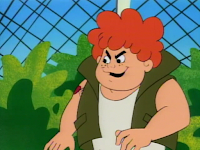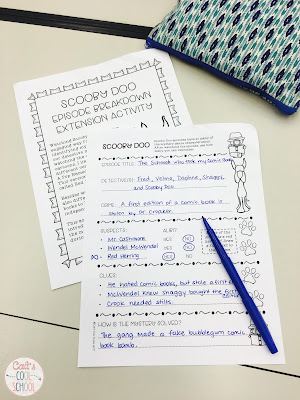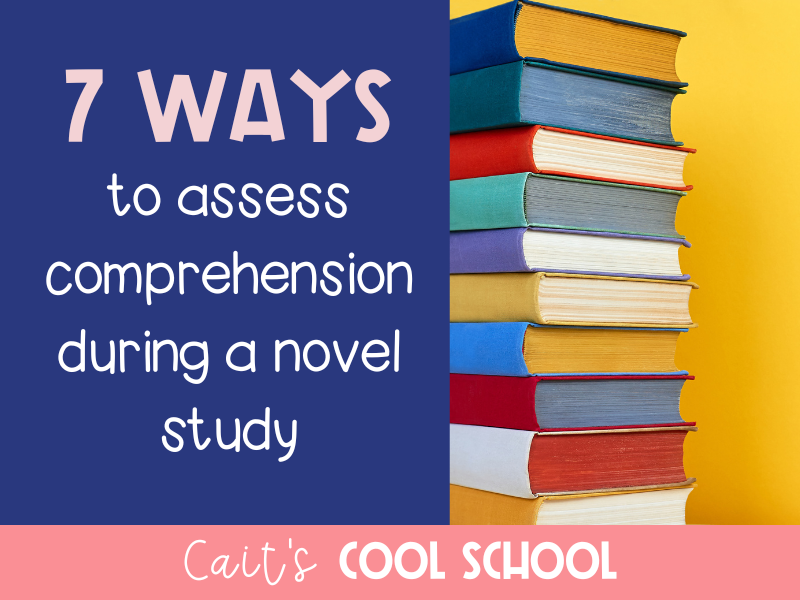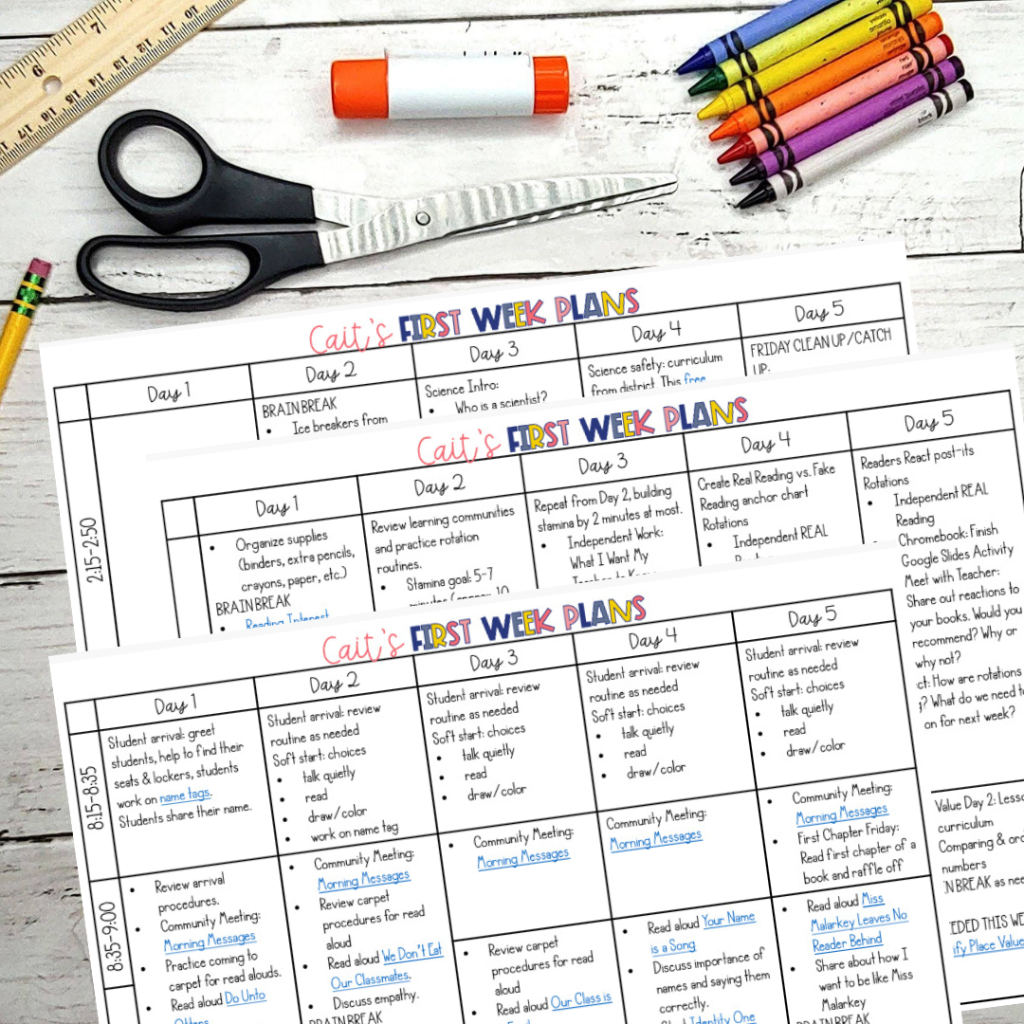Hopefully you’ve already read part 1 of my mystery genre unit where I set the stage to engage with a Detective Book Mission. Here I’m going to talk to you a little about Scooby Doo and one of my favorite characters Red Herring.
 |
| This post may contain some affiliate links, which means if you click on one of the links and make a purchase, I’ll receive a small commission. You will never incur a fee or charge for this. |
Pretty much everyone knows Scooby Doo and has watched the cartoon in one of its many incarnations. I love classic Scooby, but my absolute FAVORITE version of Scooby Doo is a little known version from 1988-1991 called A Pup Named Scooby-Doo. The gang are all kids and they have some great adventures solving crimes. I also decided this version would work perfectly for my lesson because I remembered Fred’s sworn enemy, a character named Red Herring. As a kid, I didn’t get this joke at all, but now I realize this is the perfect tool for giving my students another example of their favorite new mystery term.
 |
| Red Herring! |
For our Scooby Doo lesson, I started off by asking my students to remember all of the fun mystery terms we had learned during our previous class. We wrote the list on the board as we named and defined each word- detective, crime, suspect, red herring, clue, etc. Once we were finished our verbal review, it was time to watch!
 |
| We used this worksheet to help us gather all of our mystery data. It’s included in my Complete ELA Mystery Genre Unit. |
I chose “The Schnook Who Took My Comic Book” from Season 1 because I knew it featured Red Herring. While watching, I wanted my students to take notes and track all the mystery elements. We paused a few times when my students called out- “That’s a clue!” We also stopped to record through the recap of clues right before the big reveal, and we took a quick vote on who we thought the committed the crime. After the episode was over, students reviewed their notes with their table groups and wrote down how the mystery was solved. I did collect their work, not for a grade, but more for myself to see if my students were able to follow along and understand the different mystery aspects.
There were a couple things that I really enjoyed about this lesson (besides an excuse to watch one of my favorite childhood cartoons!):
1. The show follows a format that easily adheres to all of the aspects of the mystery genre, which means almost every episode works.
2. Episodes are short, so this doesn’t need to take up my whole ELA time.

4. Bonus: Did you know there are Scooby Doo books? If I wanted to add in a reading aspect, or even reteach this lesson (especially for my lower level learners), I would use these books I found in our school library. Scooby-Doo and the Cupcake Caper is an example of the Level 2 reader that would work well. They’re available used on Amazon for as low as 15 cents if you can’t find them at your local library.

Have you ever used Scooby Doo or another TV show in your classroom?
Click here for the next blog post- all about how we became novel detectives!

P.S. Interested in more mystery resources? Check out the Complete ELA Mystery Genre Unit in my TpT store, which includes this Scooby Doo printable plus the Detective Mission from my last post and more.






 The first FIVE days of lesson plans for the beginning of the year.
The first FIVE days of lesson plans for the beginning of the year.